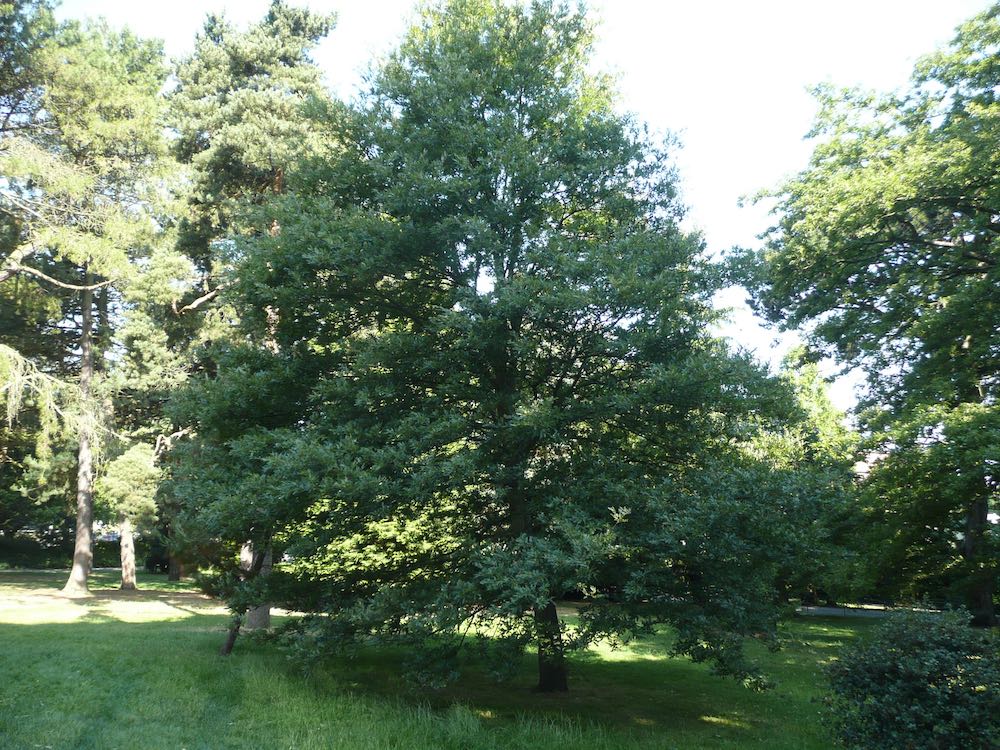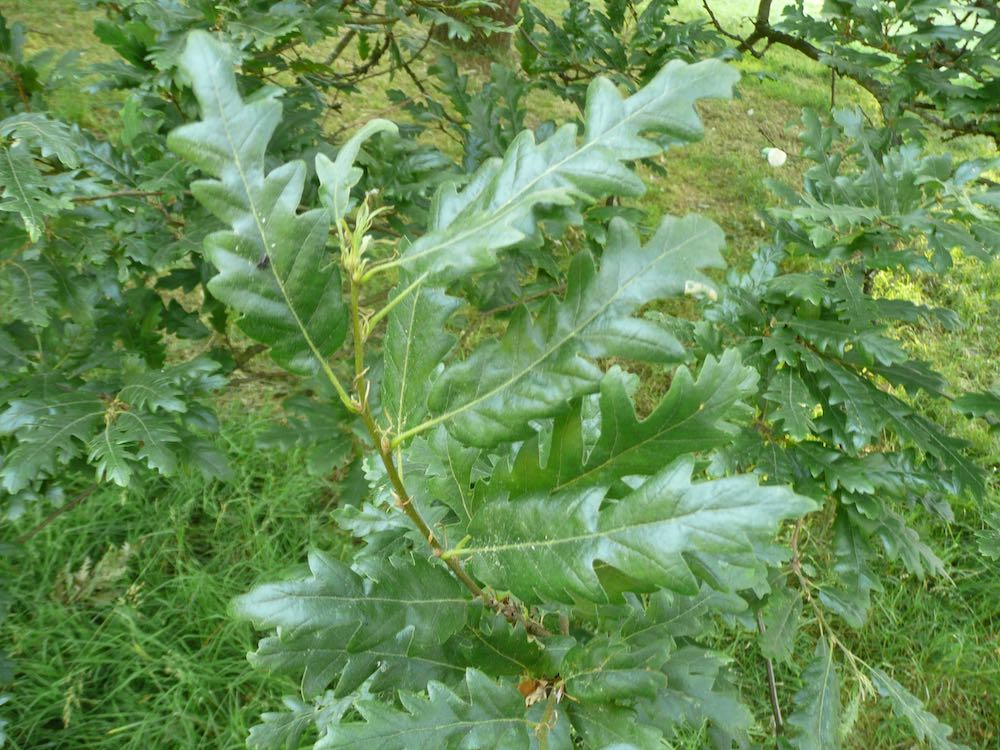Quercus cerris L.
Turkey oak or Austrian oak
The tree tag number relates to the black tree-maintenance tags, usually fixed on the trunk, 2 to 3m above ground level.
Quercus cerris is a medium size tree (in the UK usually smaller than Q. robur). Its leaves are deeply divided and it is distinguished by the mossy appearance of the acorn cups. It is one of the cerris section of the genus Quercus. The leaves are narrower than those of Q. robur and Q. petraea and, along with others of the cerris group of oaks, it has soft bristles surrounding the shoot buds. It is a native of SE France across to the Balkans and Turkey.
Turkey oak is one of the two hosts of the wasp Andricus quercuscalicis which, in another part of its life cycle, attacks native oaks (Q. robur and Q. petraea) forming ‘knopper galls’ which destroy the acorns. The pest is a recent introduction and can breed only where both Quercus cerris and native oaks grow close together. The knopper gall wasp arrived in Devonshire in the 1950s, expanding rapidly in 1979. It was recorded in Phoenix Park, Dublin in the 1990s and in Scotland in 1995. The wasp Andricus quercuscalicis injects an egg into the developing acorn in spring. The grub secretes chemicals which subvert the oak tree into producing a home for the grub instead of an acorn. The galls reduce the crop of acorns but do little damage to the adult tree. In 1998 the Ministry of Defence in the UK ordered the felling of all Turkey oaks on their property to protect the native oaks. Knopper galls are now frequently seen on the native oaks in the Botanic Gardens.




